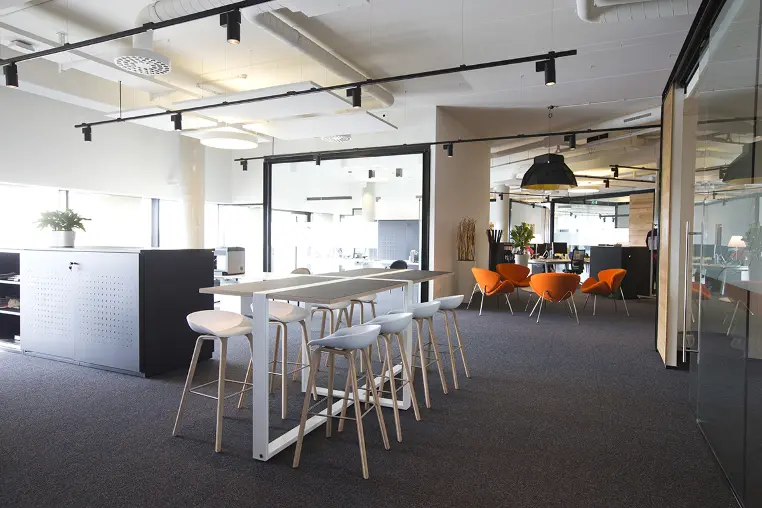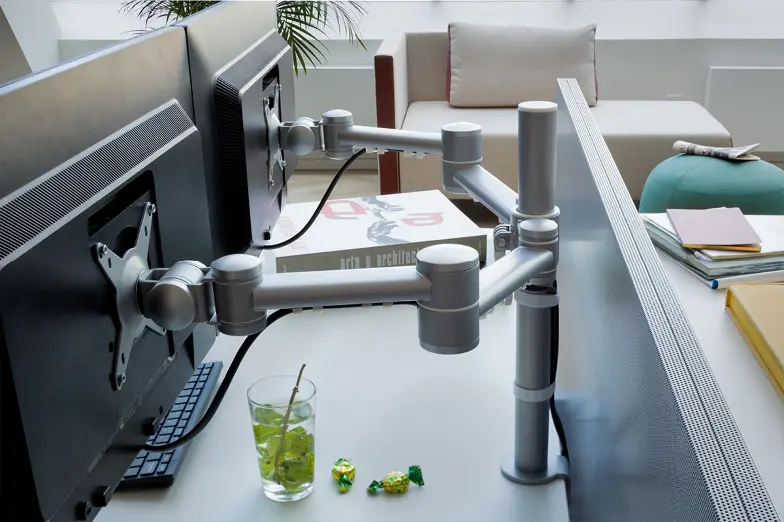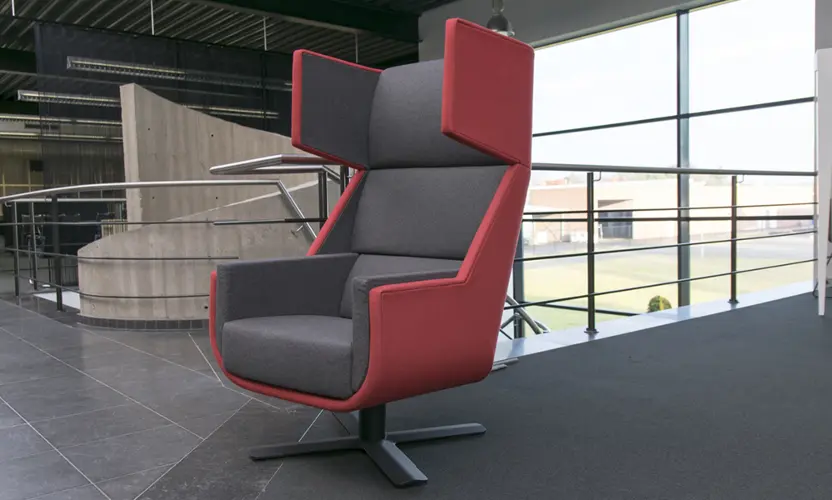Schréder

Reinventing workspaces guided by the light spectrum
In 2019, Schréder decided to revamp the interior of its R&D centre in Liège. The company’s greatest concern? To offer all employees a workspace that is better attuned to Schréder's innovative character. Together with the company, Wah Wah Design took things one step further: the studio analysed how the lighting giant works and proceeded to create a completely new work dynamic that unites the people and light itself.
“Let’s imagine your workplace!”: this creed marked the start of the collaboration with Romain Wallon and his team at Wah Wah Design. This young studio specialises in workspace design and has formulated an answer to a need that many companies currently have: they want to offer employees spaces attuned to their changing work habits. Led by an art director, a business developer and two interior architects, Wah Wah Design proposed a total package: from initial concept to final delivery, including budgeting and monitoring of activities.
Schréder’s R&D centre is a laboratory for public lighting all over the world and is driven by LightabilityTM. They developed this concept to offer an urban experience that marries comfort, respect, safety and innovation with active, open and inclusive participation of citizens in the public space. It is a way for Schréder to reinvent the world in a sustainable way based on lighting.
Carte blanche for the experts
These two parties may just as well have never met. But experience shows that the foundation of the most successful collaborations often lies in recognition of the expertise involved in any speciality. Thanks to this open-minded approach, office interior architect Pami was able to persuade Schréder’s R&D team to hire Wah Wah Design.
The needs described in the briefing - offer local and international employees a pleasant reception, provide functional spaces that promote connectivity, build as many meeting and relaxation areas as work zones, anticipate the needs of technical and administrative employees, etc. - were driven by the ambition to upgrade and improve the dynamics of that which was already there. A broad assignment issued by the company in the form of a carte blanche that Wah Wah Design filled with substance in no time.
A strong concept that drives change
The studio quickly proceeded with an active study of the light and, more specifically, the light spectrum. Colours, something these light specialists are all too familiar with, are interwoven with the values and core business of the company. They are used according to their own meaning and make up an integral part of the visual communication in the work environment: yellow represents focus, organisation and enthusiasm. It stimulates and promotes self-confidence. It should come as no surprise that this colours features in all offices. Red stands for decisiveness and is used in the executive offices, etc. Colours are now the guides that steer movements, demarcate spaces, ease the exchange of ideas and determine the entire redesign project.
The basic principle of the ‘Wah Wah method’ is that the storytelling they came up with for Schréder had to be paired with an internal integration exercise. Wah Wah Design uses innovative tools to guide their client through the process: cleverly combined mood boards, sketches and visual walk-throughs provide strong visual arguments to reassure the initiators of the project and generate trust. Just like the structured organisation proposed by the design team to give rise to a work routine. As a result, the added value of the designer reveals itself right away.
Wah Wah Design placed its bets on adaptability, flexibility and agility to get back on top - necessary characteristics given the challenges created by the health crisis. Despite changes to the schedule, late delivery of raw materials and safety measures imposed, 95% of requests made during the assignment were executed within budget and on time.
Creating a trusted workspace
The company savoured this and pushed the integration of the project to the extreme with internal workgroups and the creation of ‘test offices’. Intended to keep employees posted on how the project was progressing, this approach turned out to be extremely useful for mapping the needs as well due to the great deal of general enthusiasm.
In addition to an open-plan approach for the spaces, Wah Wah Design also came up with new living spaces: focus booths, relaxation rooms and spaces to facilitate a large number of small-scale meetings. Because the designers took into account how Schréder’s employees work, the effect of their interventions was quickly noticeable. Employees adopted the space in no time and gradually discovered new ways of using the rooms.
At the time of writing, they have already grasped what the new spaces represent and proceeded to occupy them despite their recent commissioning. It is currently estimated that 70% of their employees will return to the office post-COVID19, a high figure that is undoubtedly due, in part, to the redesign of the spaces.
Article drafted by Emilie Parthoens with the support of the European Fund for Regional Development.
http://walloniedesign.be/recits-dentreprises/wahwah-schreder/

































